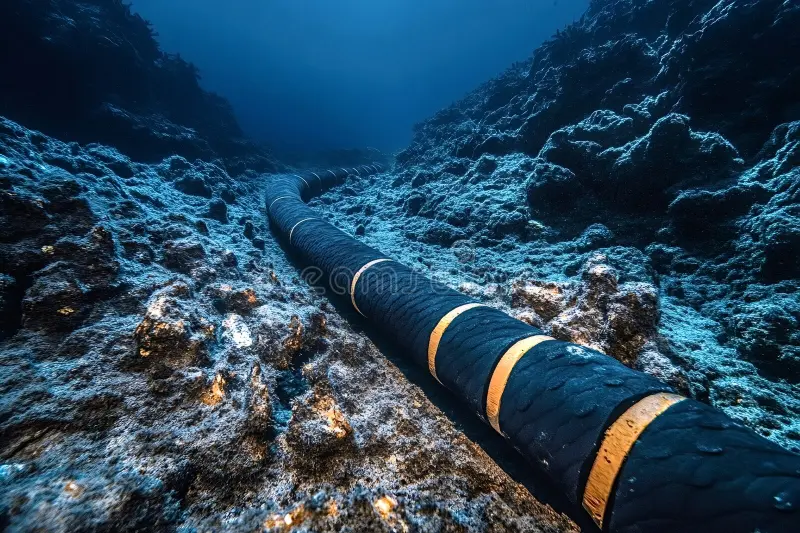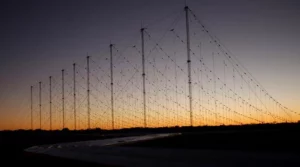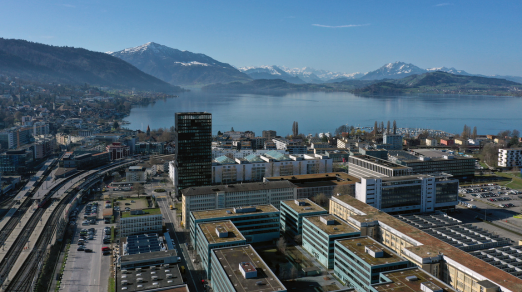Underwater cables, often referred to as submarine communication cables, form the backbone of global telecommunications and data transfer. These cables, which span thousands of kilometers across ocean floors, carry over 95% of international data, including internet traffic, financial transactions, and government communications. Despite their critical importance, underwater cables remain vulnerable to a range of threats, both natural and human-induced. This article explores the vulnerabilities of these cables, proposes strategies for their enhanced protection, and examines real-world incidents—including recent events in the Baltic Sea—that highlight the need for improved security measures.
The vulnerabilities of underwater cables are multifaceted. Physically, these cables are exposed to natural hazards such as earthquakes, underwater landslides, and even marine life. For instance, in 2006, an earthquake near Taiwan severed several submarine cables, disrupting internet and telephone services across Asia. Similarly, fishing activities and ship anchors pose significant risks. In 2019, a fishing vessel accidentally damaged a cable off the coast of Mauritania, causing widespread internet outages in West Africa. Beyond physical damage, underwater cables are also susceptible to deliberate sabotage. While no specific country or entity can be singled out without evidence, the potential for state or non-state actors to target these cables for strategic or disruptive purposes is a growing concern.
To better protect underwater cables, a combination of technological, legal, and diplomatic measures is essential. One approach is the development of more robust cable designs. Modern cables are often armored and buried beneath the seabed to reduce the risk of damage from fishing activities or anchors. However, these measures are not foolproof. Advances in materials science could lead to cables that are more resistant to physical stress and environmental degradation. Additionally, the use of distributed sensor networks along cable routes could provide real-time monitoring, enabling rapid detection and response to potential threats.
Legal frameworks also play a crucial role in protecting underwater cables. The United Nations Convention on the Law of the Sea (UNCLOS) establishes the legal basis for the protection of submarine cables, but enforcement remains a challenge. Strengthening international cooperation and establishing clearer penalties for cable damage, whether accidental or intentional, could deter harmful activities. Furthermore, the creation of protected zones around critical cable routes, similar to marine protected areas, could limit human activities that pose risks to these infrastructures.
Diplomatic efforts are equally important. Given the global nature of submarine cables, international collaboration is essential to ensure their security. Multilateral agreements could facilitate information sharing about cable routes, maintenance schedules, and potential threats. Joint patrols and surveillance operations in high-risk areas could also enhance the protection of these vital assets. For example, the Mediterranean Sea, a region with a high density of submarine cables, could benefit from coordinated efforts among neighboring countries to monitor and safeguard these infrastructures.
Real-world incidents underscore the urgency of addressing the vulnerabilities of underwater cables. In 2008, a series of cable cuts in the Mediterranean and Middle East disrupted internet and telephone services across several countries, including Egypt, India, and Pakistan. While the exact cause of the cuts remains unclear, the incident highlighted the potential for widespread disruption. More recently, in 2021, a cable serving the Faroe Islands was damaged, leading to a temporary loss of internet connectivity. Although the cause was attributed to natural factors, the incident demonstrated the fragility of these systems and the need for robust contingency plans.
Another notable example occurred in 2013, when divers were reportedly attempting to intercept a cable off the coast of Egypt. While the motives and identities of the individuals involved were not conclusively determined, the incident raised concerns about the potential for espionage or sabotage. Such scenarios emphasize the importance of not only physical protection but also cybersecurity measures to prevent unauthorized access to data transmitted through these cables.
The Baltic Sea has recently emerged as a focal point for concerns about the security of underwater cables. In early October 2023, reports surfaced of damage to a gas pipeline and a telecommunications cable between Finland and Estonia. While the exact cause of the damage remains under investigation, the incident has raised alarms about the vulnerability of critical undersea infrastructure in a region already marked by geopolitical tensions. The Baltic Sea is a hub for submarine cables connecting Northern Europe to the broader global network, making it a strategic location for both communication and energy transmission.
The damage to the Balticconnector gas pipeline and the adjacent telecommunications cable has prompted swift responses from regional governments and NATO. Finnish authorities have described the incident as “likely caused by external activity,” though they have stopped short of attributing blame to any specific actor. Estonia has echoed these concerns, emphasizing the need for enhanced surveillance and protection of undersea infrastructure. NATO has also stepped up its presence in the region, deploying additional ships and aircraft to monitor critical underwater assets.
This incident follows a pattern of heightened activity around undersea infrastructure in the Baltic Sea. In September 2022, the Nord Stream gas pipelines, which run through the Baltic Sea, were damaged in an act of sabotage that remains unresolved. While the Nord Stream incident primarily affected energy infrastructure, it underscored the broader risks to undersea cables and pipelines in the region. The Baltic Sea’s shallow waters and dense network of cables make it particularly vulnerable to both accidental damage and deliberate interference.
The recent events in the Baltic Sea highlight the need for a coordinated international response to protect underwater cables and pipelines. Enhanced monitoring, rapid response capabilities, and diplomatic cooperation are essential to safeguarding these critical assets. The Baltic Sea serves as a stark reminder that the security of underwater infrastructure is not just a technical issue but also a geopolitical one, requiring collaboration among nations to mitigate risks and ensure the uninterrupted flow of information and energy.
In conclusion, the protection of underwater cables is a complex and multifaceted challenge that requires a combination of technological innovation, legal frameworks, and international cooperation. By addressing the vulnerabilities of these critical infrastructures and learning from past incidents—including the recent events in the Baltic Sea—the global community can better safeguard the flow of information that underpins modern society. The stakes are high, and the need for action is clear.






